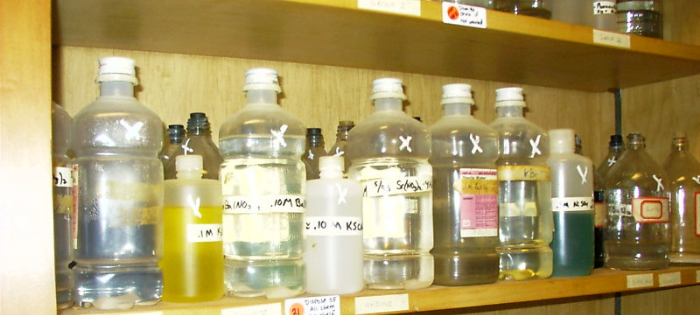
Environment
Comments: No Comments
Biotechnology Focus
- Are you managing your waste correctly?
- Are you disposing of your waste efficiently and cost-effectively?
- Do you have a system to track your waste and sustain its management?
Waste is one of those risks that is often overlooked at companies because it isn’t something core to operations. Unfortunately, if waste is incorrectly managed, there are regulatory compliance risks, exposure risks, and potential financial penalties that can impact your business.
The following represent just some of the challenging waste situations facing biotech companies that must be addressed:
- Chemical liquid waste going down the drain
- Chemicals being evaporated up the hood
- Biohazardous materials being thrown in the trash
- Chemical spill cleanup materials that are being thrown in the trash
Waste products such as these do not belong in standard trash and may hold either more value or more risk to the organization. For example, some wastes have continued value through recycling or repurposing. Conversely, other wastes may be regulated, requiring special disposal processes. Improperly disposing these regulated wastes (i.e., through standard trash) can create safety or environmental risks that may cost big dollars.
How do you avoid making pricey mistakes?
Methodical Approach
A methodical, analytical approach to characterizing and evaluating waste can substantially improve efficiencies when it comes to handling waste, and minimize the risks of improper waste management. Evaluation of waste streams (i.e., the type of waste generated and how/where it is generated) can help to identify:
- Areas to improve efficiencies in waste management processes
- Wastes that can be minimized and/or prevented to reduce disposal costs
- Alternative strategies for disposal and waste management that may result in minimized inputs and lower cost of initial supplies
- Regulatory requirements to avoid any potential penalties for non-compliance
Let’s take the evaluation of waste solvent as one example. Companies frequently purchase large quantities of solvent and then end up paying for its disposal. Reviewing the type of solvent and how it is being used may reveal an alternative with the potential for significant savings, such as a bench–top distillation unit, which would provide for:
- Lower upfront costs in the purchase of solvent
- Lower costs in the disposal of hazardous waste solvent
- Fewer risks and regulatory requirements associated with stocking less solvent
Business Benefits
Strategic evaluation of one type of generated waste may also lead to significant business benefits beyond the waste itself. A thorough review of business and operational processes and the waste being generated creates the opportunity for a “bottom–to–top” evaluation of all regulatory compliance. And that can lead to potential savings that a business may not have previously identified. Review and understanding of wastes being generated within a lab or business often leads to the following program area discussions:
- Review of EPA hazardous waste and opportunities to minimize or more cost-effectively manage this expensive waste stream.
- Evaluation of compliance with EPA waste requirements to make sure waste is labeled, stored, disposed, and reported correctly.
- Review of other waste streams, such as biohazardous, radiological, and universal waste streams, to assure they are being efficiently managed and in compliance with regulations.
- Evaluation of how chemicals are being managed in accordance with regulatory requirements (e.g., EPA, OSHA, DOT).
- Review of OSHA safety programs and discussions to ensure training, documentation, and procedures are in place to keep employees safe while meeting requirements for such programs as hazard communication, personal protective equipment (PPE), respiratory protection, safety showers, eye wash stations, fire extinguishers, confined space, energy control and emergency response planning.
- Exploration of options for recycling and best practices that have the potential to significantly improve financial bottom line management and increase sustainability of lab operation.
Strategy Going Forward
Effectively managing your waste really begins with a comprehensive review of operations. It is a process of understanding what you have, where it fits, and what you need to do with it to minimize risk, reduce costs, and ensure compliance. This process walks a company through the following basic questions:
- What are my business processes?
- What kind of waste does my company generate?
- What waste regulations apply to my business?
- How do I understand the potential impacts of my waste?
- How do I come up with a strategy to effectively minimize waste and reduce cost while keeping employees safe?
- How do I ensure that we efficiently and cost-effectively manage waste and compliance for the long run?
Over the next several weeks, we will be answering each of these questions in a series of articles to help address some of the common—and often costly—mistakes related to waste management and to help ensure you are managing your wastes in the appropriate and most cost-effective ways possible.
